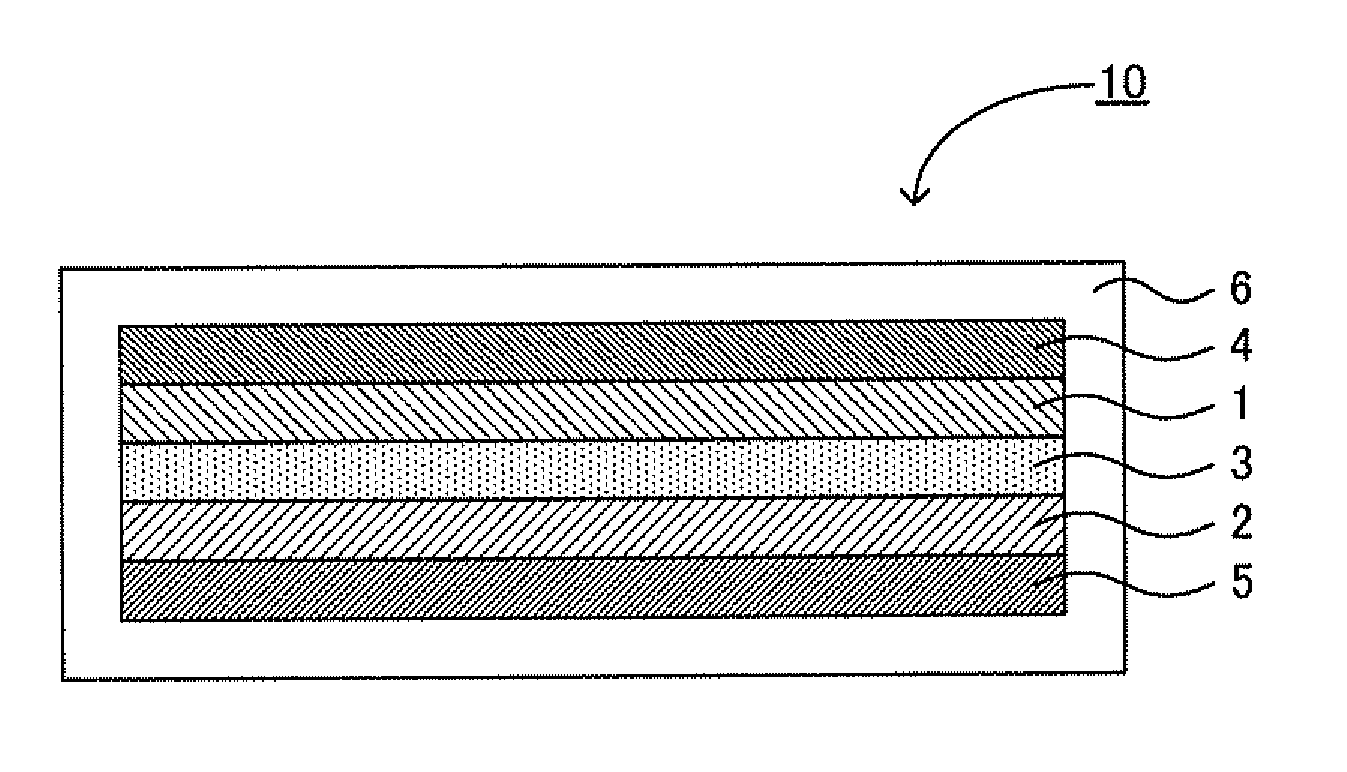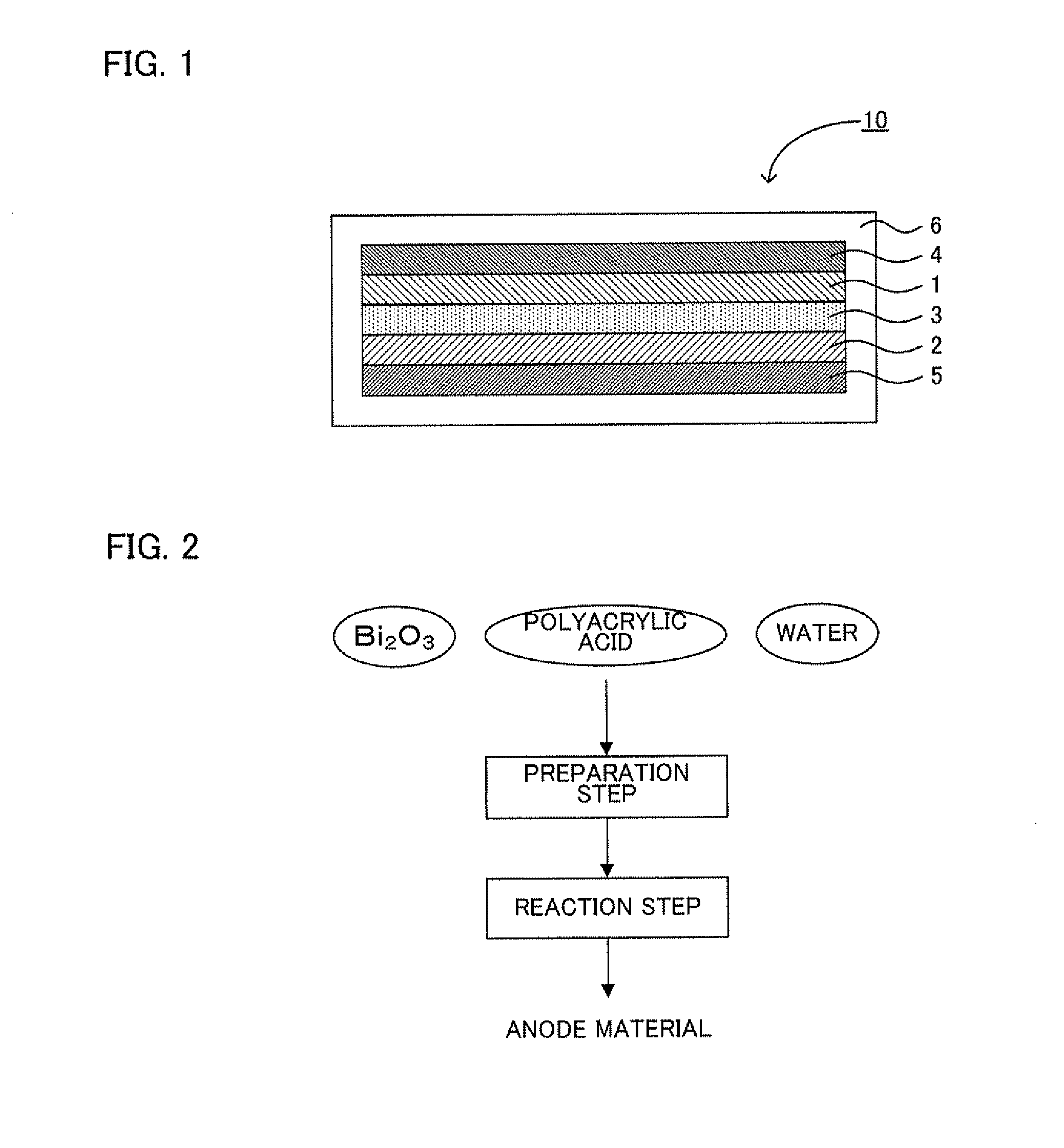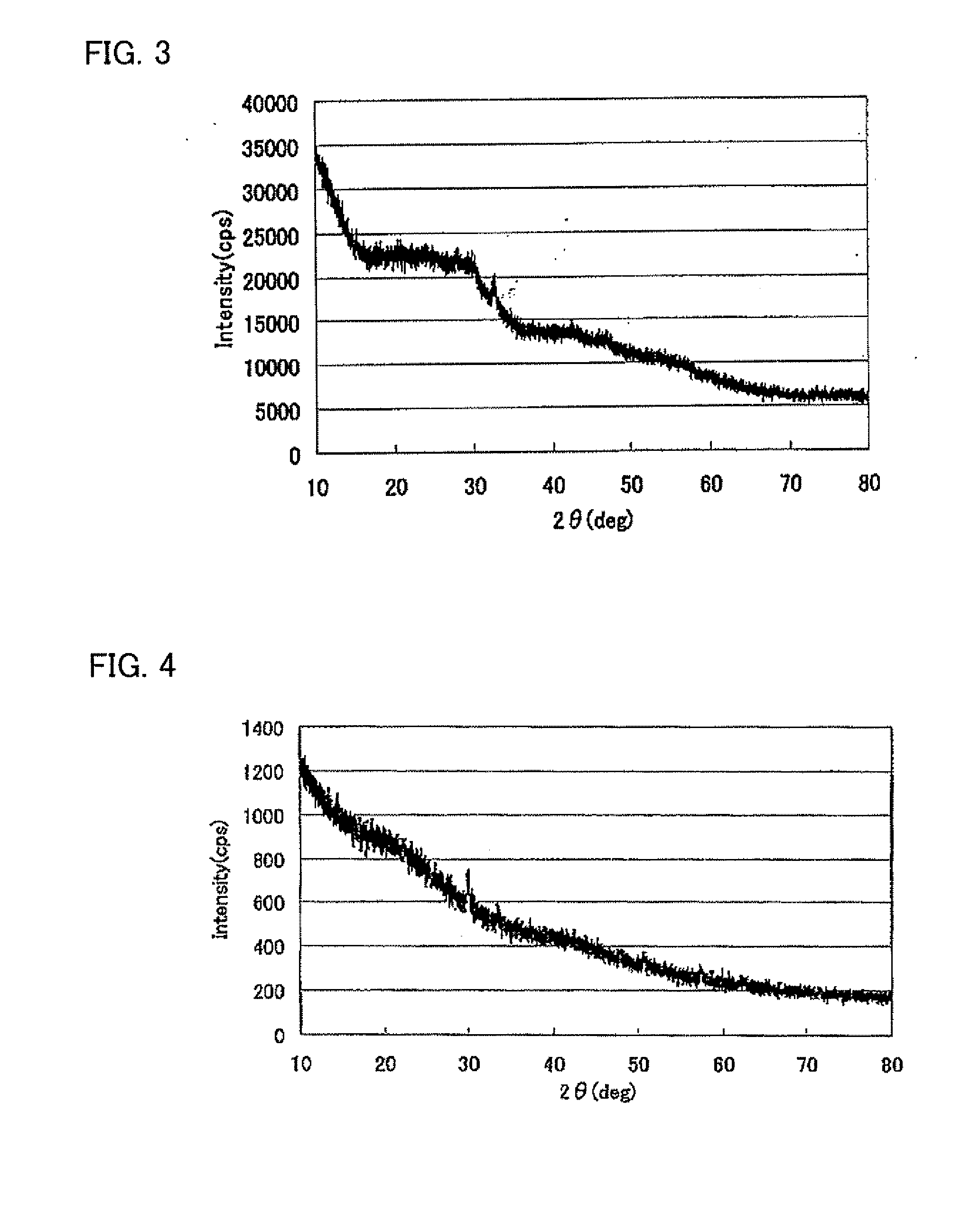Anode material, lithium secondary battery, and method for producing anode material
- Summary
- Abstract
- Description
- Claims
- Application Information
AI Technical Summary
Benefits of technology
Problems solved by technology
Method used
Image
Examples
synthesis example 1
Synthesis of Reactant
[0096]First, bismuth oxide (Bi2O3), a polyacrylic acid with a number-average molecular weight of 250000 and water were prepared as a starting material. Dissolved was 28 g of the polyacrylic acid 2800 ml of the water and 31 g of the bismuth oxide was further added thereto to prepare a reaction liquid. Next, this reaction liquid was stirred at a temperature of 80° C. for three days, condensed and thereafter dried under reduced pressure at a temperature of 120° C. to thereby obtain 58 g of a reactant.
synthesis example 2
[0097]First, tin oxide (SnO), a polyacrylic acid with a number-average molecular weight of 250000 and water were prepared as a starting material. Dissolved was 28 g of the polyacrylic acid in 2800 ml of the water and 27 g of the tin oxide was further added thereto to prepare a reaction liquid. Next, this reaction liquid was stirred for four days while heated and refluxed under argon gas, condensed and thereafter dried under reduced pressure at a temperature of 120° C. to thereby obtain 54 g of a reactant.
[Evaluations 1]
[0098](X-Ray Diffraction Measurement)
[0099]X-ray diffraction (XRD) measurement was performed for the reactants obtained in Synthesis Examples 1 and 2. The results are shown in FIGS. 3 and 4 respectively. Further, XRD measurement was performed for the bismuth oxide (Bi2O3) and the tin oxide (SnO). The results are shown in FIGS. 5 and 6 respectively.
[0100]As shown in FIG. 5, in XRD measurement result of Bi2O3, a plurality of diffraction peaks were detected and it was co...
example 1
Preparation of Anode Material
[0102]Milled by ball mill for an hour was 10 g of the reactant obtained in Synthesis Example 1, and thereafter 1 g of acetylene black was added thereto and subject to mechanical milling for three hours to regard the obtained powder as an anode material.
[0103](Production of Evaluation Battery)
[0104]First, 10 g of the anode material and 0.6 g of carbon powder as a conductive material were introduced into 7.8 g of a n-methylpyrrolidone solution as a solvent, in which 1.2 g of a polyamic acid as a precursor of a binder was dissolved, and kneaded until uniformly mixed to produce a paste. Subsequently, 2.4 g of n-methylpyrrolidone was added to this paste and kneaded, and thereafter n-methylpyrrolidone was further added thereto to adjust viscosity, and the paste was applied onto one side of a Cu current collector having a thickness of 10 μM with a texture amount of 4.5 mg / cm2, and dried. In addition, the obtained member was pressed and burned at a temperature o...
PUM
 Login to View More
Login to View More Abstract
Description
Claims
Application Information
 Login to View More
Login to View More - R&D Engineer
- R&D Manager
- IP Professional
- Industry Leading Data Capabilities
- Powerful AI technology
- Patent DNA Extraction
Browse by: Latest US Patents, China's latest patents, Technical Efficacy Thesaurus, Application Domain, Technology Topic, Popular Technical Reports.
© 2024 PatSnap. All rights reserved.Legal|Privacy policy|Modern Slavery Act Transparency Statement|Sitemap|About US| Contact US: help@patsnap.com










